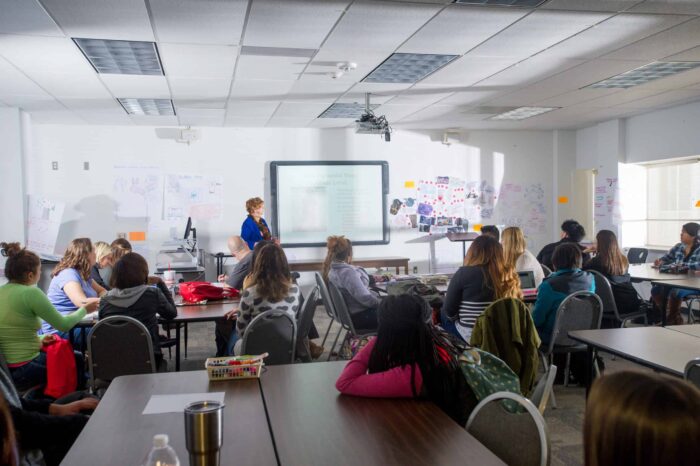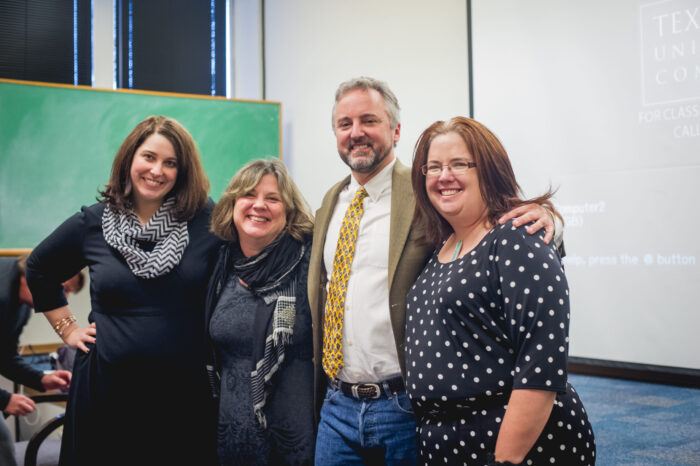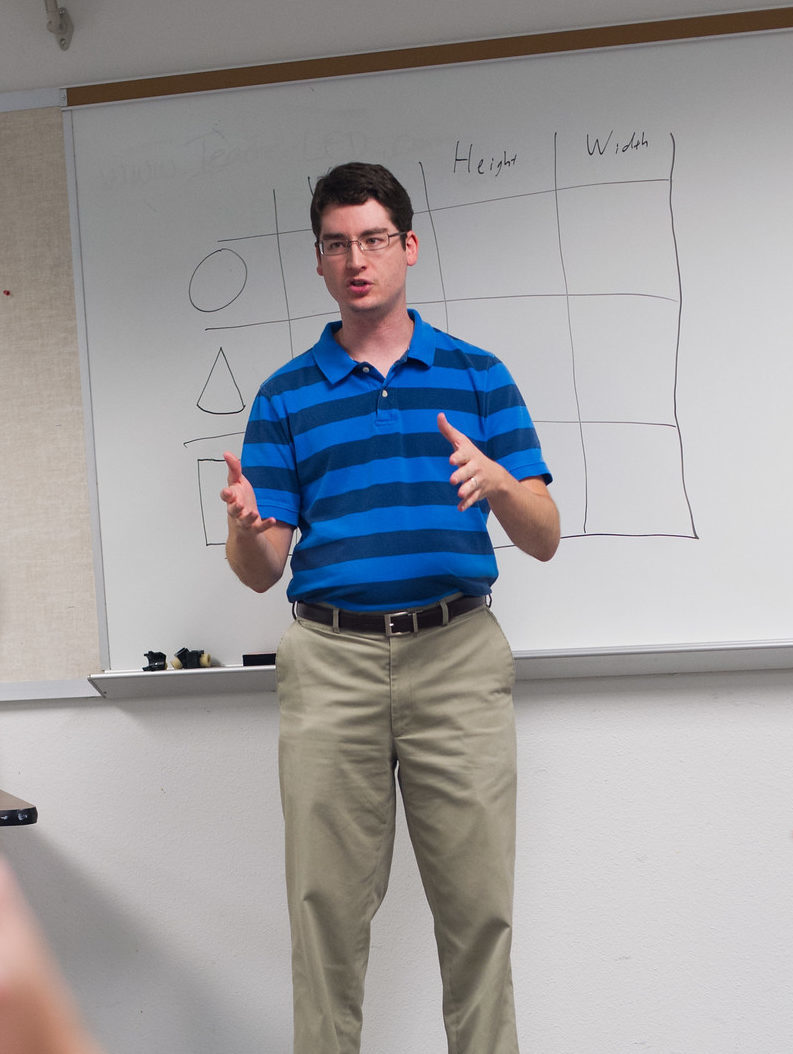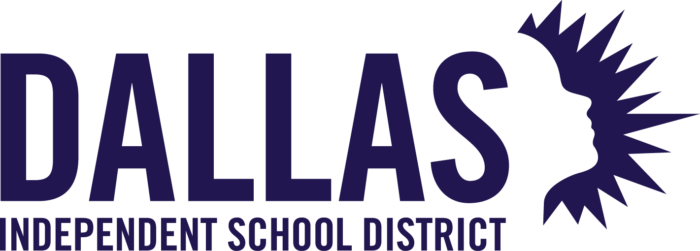
- On this page:
-
 Tracks
Tracks
-
 Faculty
Faculty
-
 Careers
Careers
-
 Employers
Employers
-
 Course Delivery
Course Delivery
-
 Scholarships
Scholarships
-
 FAQs
FAQs
-
 Cost
Cost
-
 Team
Team
-
 Contact Us
Contact Us
Education (BA/BS)
Bilingual – Grade EC-6
In today’s competitive and multilingual world, being bilingual can give students an advantage. As an educator, you can help prepare them by integrating both English and Spanish into their learning experiences.
Prepare Your Students for the Future
Develop an in-depth understanding of multicultural learning environments with our interdisciplinary studies bachelor's degree program. If you seek to become a bilingual teacher, who provides instruction in both Spanish and English, this program requires Spanish literacy. If you seek to become a bilingual teacher, who provides instruction in English, you do not need foreign language literacy.

See Yourself Succeed With a Degree in Bilingual Education


Career Readiness
Experience the classroom environment through field-based training as you work alongside a bilingual teacher.


World-Class Faculty
Collaborate with our acclaimed faculty to develop your skills and gain expertise.

Education Centered
Participate in small classes while experiencing one-on-one support and encouragement.

Cultivate Your Dream
Study the dynamic relationship between language, culture and education with our comprehensive program.
Focus Your Passion
We offer a bilingual generalist bachelor's degree track to become a teacher of bilingual students:
Bilingual Generalist (EC-6)
Bring your language expertise to the classroom and immerse your students in a variety of bilingual and content learning experiences. Our 120-credit hour program will prepare you for instruction in English and Spanish. Completing this program and passing all TExES exams certifies you to be a bilingual generalist in the state of Texas.
Faculty Spotlight

April Sanders, Ph.D.

What You Will Learn
- Participate in multicultural discussions with professors and peers.
- Enhance your Spanish literacy skills as you prepare to be a Bilingual teacher.
- Learn to teach English as a second language in an engaging way.
- Take courses to explore classroom management and pedagogy.
- Integrate cultural identity and heritage through instruction practices.

Careers
Our bilingual teacher graduates are in high demand at local school districts. Many of our students pursue master's level coursework and often move into leadership or specialist positions on their campuses. Bilingual teachers frequently earn a stipend of $2,000 – $5,000 per year, depending on the district.
Career Possibilities and Current Median Salaries
US DOL Bureau of Labor Statistics, Occupational Outlook Handbook, 2020
Potential Employers
Our graduates are frequently sought-after by local school districts. Job placement and satisfaction are ranked highly in our education program. Here are just a few districts where our students find employment. Discover where you belong!
Featured Courses

Course Delivery
Our flexible program offers face-to-face instruction at our main campus in Commerce and our extended university sites located at Dallas, Mesquite Metroplex Center, Navarro College and Collin Higher Education Center (CHEC) in McKinney. Some courses are offered online.
Related SCHOLARSHIPS
As a Bilingual studies student, you have access to a wide range of scholarships specific to your degree.
Student Organizations
Spanish and English Graduates for Advancement and Development
Spanish and English Graduates for Advancement and Development is focused on developing job market skills for graduate students, including interview and conference presentation practice, CV and abstract writing and completing the graduate degree. Contact Email: [email protected]

Frequently Asked Questions
Who is my advisor?
You will have two advisors: a departmental and a bilingual advisor. Your departmental advisor
will help you with the majority of your advising. Your bilingual advisor will assist you in
matters related to your Bilingual specialization.
- Commerce,
- Contact Hannah Stotts, EDS 210
- Mesquite,
- Contact Ana Castillo, MPLX 134A
- CHEC,
- Contact Hannah Stotts, CHEC 132
- Corsicana,
- Contact Julia Persky, NAVR
Should I become a bilingual teacher or a Spanish teacher?
- To answer that question, you will want to consider several factors. One factor is what age of students you would like to teach. Bilingual teachers typically teach students between 4-11 years old in elementary school; many Spanish teachers teach students 11-18 years olds in middle and high school.
- Another key difference is the content. Bilingual teachers generally teach all content areas (language arts, math, science, and social studies) in Spanish (and sometimes English), while Spanish teachers focus on teaching Spanish grammar, vocabulary, and culture. In addition, bilingual teachers instruct native Spanish speakers who have advanced oral and sometimes written Spanish skills. Spanish teachers often teach native English speakers who have little or no knowledge of the Spanish language.
- Lastly, bilingual teachers are in great demand as the number of ESL and bilingual students continues to grow. In fact, many districts are unable to hire qualified bilingual teachers. Texas alone had over 7,000 classroom bilingual positions they were unable to fill. By becoming a bilingual teacher, you can meet this need and have more choices in where you work.
I don't know how to write well in Spanish, particularly when to write accent marks. Can I still become a bilingual teacher?
Many native Spanish speakers have well-developed oral language skills, but are growing in
literacy skills necessary for becoming a bilingual teacher. This may be the result of receiving all
or most of their education in English. Our bilingual education and Spanish courses will help you
to develop your literacy skills. To assess your Spanish proficiency, please take the university’s
Spanish placement exam right away. See the “Spanish” section of this FAQ for more information
I speak Spanish, but I don't speak “proper” Spanish. Can I still become a bilingual teacher?
Most native speakers, also called heritage speakers, have excellent fluency and pronunciation.
Our bilingual education and Spanish courses are designed to build on your existing oral language
skills. To assess your Spanish proficiency, please take the university’s Spanish placement exam
right away. See the “Spanish” section of this FAQ for more information.
I'm learning Spanish, but not a native speaker. Can I become a bilingual teacher?
It’s a definite possibility. To get started, take the Spanish placement test. Refer to the Spanish
requirements section for more information. This will determine which level of Spanish classes
you will take and if any additional Spanish classes are required besides those specified on the
degree plan. Additionally, it is helpful to immerse yourself in the language. This may mean
regularly conversing with Spanish speakers and/or studying abroad in a Spanish-speaking
country.
I'm bilingual. I speak English and a language other than Spanish. Can I become a bilingual teacher?
That’s great that you are bilingual; this likely means you have learned a second language and so
can empathize with and better understand the process of acquiring additional languages.
Currently, however, the overwhelming majority of bilingual programs in Texas are for Spanish
speakers so we do not offer a program for EC-6 Bilingual Generalists except for those fluent in
Spanish. In our program, students take several courses that are conducted mostly or completely
in Spanish. For this reason, students who are bilingual in languages other than English and
Spanish cannot earn their EC-6 bilingual certification with us. However, they may obtain their
ESL certification.
Should I earn my EC-6 Generalist certification and just add my EC-6 Bilingual certification later?
If you plan to be a bilingual teacher, it is strongly recommended that you take the classes on the
degree plan to best prepare you for the certification exams and for the later teaching of real life
Spanish-speaking children in a bilingual program. If you continue and graduate from the EC-6
Bilingual Generalist program, you can decide to take the EC-6 Bilingual certification exams
later; however, we highly recommend you take them before your residency and internship so that
the concepts studied in your classes are fresh in your mind. In addition, many districts, even if
they have a bilingual teaching vacancy, may require you to have the actual bilingual certificate in
hand before they can offer you a position.
What are the benefits of becoming a bilingual teacher?
There are innumerable benefits to becoming a bilingual teacher! One advantage is that you will be able to teach in two languages and share two cultures, thereby meeting the needs of a growing population of learners. Another benefit is a deep satisfaction in being able to give back to your community. Still, other benefits may include a yearly stipend (the exact stipend varies from district to district).
Should I earn a BAIS or BSIS?
A BSIS is recommended, but you may wish to discuss the difference between a BAIS and BSIS
with your advisor. The BAIS requires 12 foreign language credits, whereas the BSIS does not.
If you are interested, with a BAIS you can also take an additional foreign language class to earn
a minor in a foreign language.
How do I get into the EC-6 Bilingual Generalist degree program once I am admitted to TAMU-C?
Ask your departmental advisor to sign you up for the EC-6 Bilingual Generalist program. We
also, recommend you check out the following links:
- Join the Bilingual/ESL FB Group: This will give you updates on BESO, employment opportunities, important deadlines and more.
- Take the TAMUC Bilingual Student Survey: This will allow us to make recommendations for when and where bilingual classes are offered as well as if you qualify for scholarship opportunities.
What courses will I need to take?
We provide an advisement guide which can be found here. We recommend that you take SPA 335 which has been designed to help you be successful on the BTLPT certification exam required to become a bilingual teacher. However, we understand for students living farther from campus that this may not be an option. In this case, you may take ENG 457.
How do I know which courses I still need?
Using your DegreeWorks account, you will be able to see which courses you are still missing.
When you talk with your advisor, you will want to keep in mind which classes are available each
semester, so that you take the necessary prerequisite classes needed for future classes.
Do I have to attend classes in Commerce to complete the EC-6 Bilingual Generalist program?
Most classes can be taken in McKinney, Corsicana and Mesquite, but certain classes may require students to attend classes offered exclusively in Commerce.
What BLED (bilingual/ESL education) courses do I need to take?
There are several differences between the EC-6 Bilingual Generalist and the EC-6 Generalist degree plans. One of these differences is that the EC-6 Bilingual Generalist contains courses specific to bilingual education. These include the following required courses:
- BLED 401: Foundations of Bilingual/ESL Education
- BLED 402: Bilingual Oral Language and Biliteracy Instruction
- BLED 403: Bilingual Instruction for the Content Areas
When should I take the bilingual (BLED) courses?
As seen on the advisement guide, it is recommended that you take these classes during your junior year. Most BLED courses are offered during the fall and spring semesters; however, due to enrollment numbers, a BLED class may be offered in the summer. Summer enrollment is subject to change and it cannot be guaranteed that courses will be offered then.
Course
BLED 401: Foundations of
Bilingual/ESL Education
BLED 402: Bilingual Oral Language and Biliteracy Instruction
BLED 403: Bilingual Instruction for the Content Areas
Format
All three are 100% online
Campus
All three are NA
Can I substitute courses for the BLED courses on my degree plan?
Generally speaking, no. BLED courses are designed to cover content not included in other courses. The only exception would be a BLED 497 study-abroad course in which students travel to a Spanish-speaking country with a BLED professor who designed and taught the course.
Can I substitute study abroad courses for Spanish credit?
The study abroad experience itself will not enable you to receive credit for Spanish courses. However, if you are taking Spanish courses at a university, while in a foreign country, you might be able to receive credit for Spanish courses. Please check with the Spanish department first.
I've attended community college. How do I know which courses transfer?
You will begin by working with your department advisor. He or she can answer all your questions about what courses will transfer from your community college. In general, when you look at the plans, if the column entitled “Transfer Grade” is empty, that means there is an equivalent course at your community college that can be used for credit here. An example is the “TECA 1318” which is equivalent to our “HHPK 324.”
Are there other resources available to help me strengthen my reading and writing abilities?
- Visit the TAMU-C Writing Center
I'm working on my EC-6 Bilingual Generalist certification. What certification exams do I need to take?
You will need to take the same tests as those required of non-bilingual teachers:
- Pedagogy Professional Responsibilities (PPR) (160)
- EC-6 Core Subjects test (291)
You will also need to take two tests specific to bilingual education:
- Bilingual Target Language Proficiency Test (BTLPT) (190)
- Bilingual Supplemental (164)
When can I take the BTLPT?
We recommend you take the exam right after taking BLED 402, BLED 403 and your Spanish courses, but before your residency and internship.
What do I need to do be eligible to take the Bilingual Supplemental?
For students requesting approval after January 1, 2020:
- Pass the EC-6 Generalist PPR and Core Subjects test
- Pass BLED 401 prior to requesting permission to take the Bilingual Supplemental.
- Document 20+ hours of Bilingual Supplemental Certify Teacher practice to your bilingual/ESL advisor. Please use discount code: TEXES4728
- Earn a passing score on your Bilingual Supplemental Certify Teacher practice exam.
- Email items B and C to your corresponding advisor
How do I register for the Bilingual Supplemental and/or BTLPT exams?
Contact your academic and bilingual advisor to request to take the exams. If your coursework requirements have been fulfilled, you and your advisor will work with the office of Educator Certification and Academic Services to register you.
What resources do you recommend to help me prepare for the BTLPT?
Here are some recommended resources:
- Certify Teacher online BTLPT test prep ($80)
- BTLPT practice interactive exam, test prep manual and other resources (resources are free, but there is $10 fee if you choose to take the interactive practice exam). Note: This resource may be integrated into coursework.
- BTLPT prep books on Amazon (various prices)
- T-Cert (free for TAMU-C students) Note: This resource may be integrated into coursework.
- Instructions for accessing the online modules
- Go to https://pact.tarleton.edu/tcert/
- Click the “Subscribe” option.
- Click the option which indicates you are attending an A&M System school and select “Texas A&M University-Commerce.”
- Submit your first name, last name, and TAMU-C email address. A verification code will be sent to your university email address within 2-3 business days.
- Use your verification code to subscribe to T-CERT. When you subscribe, you will select a user ID and password.
- Use your ID and password to login to T-CERT.
- Select the option to add modules. Select the BTLPT module.
- Instructions for accessing the online modules
- Blog with BTLPT Tips
What resources do you recommend to help me prepare for the Bilingual Supplemental exam?
What should I do now, I've failed the exam X times?
The remediation needed will depend on where you struggled. Consult your bilingual advisor for recommendations.
I'm a teaching aide. How do I earn my bilingual certification?
Those who are teaching aides can obtain their certificate in one of two ways: 1) Through the regular elementary teacher preparation program which requires about one year of education courses and one year of student teaching (one-semester internship and one-semester residency) or 2)
through the aide program which allows you to do your internship and residency (often during the same semester) while remaining in your teacher aide position. You will need to work in a bilingual classroom with a bilingual teacher mentor for at least part of your job responsibilities. Speak to your departmental advisor to see if you qualify for participation in the aid program.
How do I earn my ESL certification?
- An EC-6 Bilingual Generalist teaching certificate qualifies you for general education, bilingual, or ESL teaching assignment. You do not need a separate ESL certificate if you have a bilingual one.
- If you are not in the EC-6 Bilingual Generalist program, the regular EC-6 Generalist degree plan contains the ESL-infused courses that will help prepare you for the ESL Supplemental exam. You should take the English as a Second Language Supplemental exam (154) after you have completed your coursework and taken and passed the PPR and Core Subjects test.
Will I be placed in a school where the bilingual program is offered for internship and residency?
Yes. You will be assigned two teacher mentors, at least one of which must be a bilingual teacher.
Where can I student teach where bilingual programs are offered?
- You will learn in your BLED courses that dual language (two- or one-way immersion) programs are the most effective bilingual programs in terms of academic achievement for bilingual students. You may want to do some internet research to see if the district you think you would like to work in has any dual language schools before you make your request. Currently, all the bilingual programs in Dallas ISD are either one-way or two-way programs. Your bilingual advisor may be able to tell you of any other dual language schools in your area.
- If you are located in the Dallas area, you can request an assignment in Dallas or Mesquite ISD. Both districts have strong bilingual programs and have teacher mentors, including bilingual teachers, who have worked with A&M-Commerce for years. Student teachers can do their internship in Dallas in the spring; or in Mesquite ISD in the fall and spring.
- If you prefer an assignment in East Texas, we recommend Paris, Sulphur Springs or Greenville ISD as both districts have fairly large bilingual programs and therefore quite a few bilingual teachers. They also have a great need for bilingual teachers, and so may very well offer you a position before you even graduate if you do well as a student teacher.
When will I graduate?
This will depend on a variety of factors: how many classes you have remaining when each of your remaining classes is offered if your remaining classes require prerequisites, and how many classes you are taking each semester. You can meet with your departmental advisor to map
out a tentative timeline.
How do I find out about scholarships that are available for bilingual/ESL students?
You can view the university’s scholarship page. At this time, our department is not offering any bilingual/ESL-specific scholarships. We will
contact those pursuing Bilingual certification if/when this changes.
Who can join?
B.E.S.O. is open to all Texas A&M University-Commerce students, not just those working on degrees related to bilingual and ESL education.
What is B.E.S.O.?
B.E.S.O. is the Bilingual and English as a Second Language Student Organization. It advocates for bilingual and ESL students to promote diverse languages and cultures in the classroom.
What are the benefits of joining?
B.E.S.O. provides passionate students with opportunities to grow as emerging bilingual/ESL professionals. In turn, this demonstrates to future employers your commitment to the educational field in general and to your own growth in particular. It also distinguishes you from your peers in interviews and prepares you for a thriving career.
What kind of activities does the organization do?
B.E.S.O. provides several networks, professional development, and volunteering opportunities throughout the school year. Some activities include hearing from a Bilingual/ESL educator panel, attending regional and state conferences, and volunteering in local bilingual and ESL classrooms.
How do I join?
There are two steps: complete and turn in the membership form and pay the dues ($10 for undergraduate and $20 for graduate students). Contact your bilingual advisor for the membership form.
I don't live in Commerce. Can I still participate in the activities?
Yes, you may. When possible, our meetings are broadcast virtually to the Metroplex, McKinney, and Commerce campuses, and at times online, to accommodate students across the area.
What if I can't attend all the meetings?
While we would love to see you at all the meetings, we realize that other commitments do not always make this possible. That is why, in addition to B.E.S.O.’s regular meetings, the organization offers other events. Volunteer and extended professional development opportunities are often offered throughout the year at various times and locations.
What can I do to ensure I am receiving the latest information regarding the bilingual program?
- Keep your contact information up-to-date: Your department and bilingual advisor will make every effort to keep you up-to-date. However, in order for them to contact you, you will need to make sure that your contact information, both email address and phone number, is correct in MyLeo. Then, be sure to check your email regularly.
- Respond to emails: From time to time, your advisors or other university faculty/staff may request information from you via email. This information is generally time sensitive. Therefore, please be sure to respond to any requests for information in a timely matter (generally no longer than 48 hours).
Is there a social media page I can join to receive more information regarding opportunities for bilingual/ESL educators?
- Yes, please join our Facebook group Bilingual/ESL@TAMUC,
- There, you will find additional information related to teaching and bilingual/ESL education, such as professional development opportunities, online resources and university event invitations.
- You are also invited to follow the TAMU-C Facebook pages listed below.
- Undergraduate Bilingual & ESL Advising FAQ 14 TAMU-C Curriculum and Instruction Facebook page
- TAMU-C University Facebook page
What do I need to do to earn my ESL certification?
What are the requirements to take the ESL Supplemental exam?
- Document 20+ hours of ESL Supplemental (154) practice to your internship and residency university liaison. Please use discount code: TEXES4728
- Pass the Certify Teacher ESL Supplemental Practice exam
- Pass the PPR exam
- Pass the Core Subjects exam
- Pass BLED 412 with a C or higher
- Pass ECE 358 with a C or higher
Who can grant me approval to take the ESL Supplemental exam?
Once you are in internship or residency, your university liaison or center coordinator can grant
approval.
What resources are available to prepare for the ESL Supplemental exam?
Undergraduate Program Costs
Program Costs
Tuition and fees for undergraduate students taking 12 credit hours are $4,212 for Texas residents and $9,108 for non-residents.
WE ARE HERE TO HELP!
Contact Us
- Department of Curriculum and Instruction
- 903.886.5537
- 903.886.5581
- Sowers Education South













